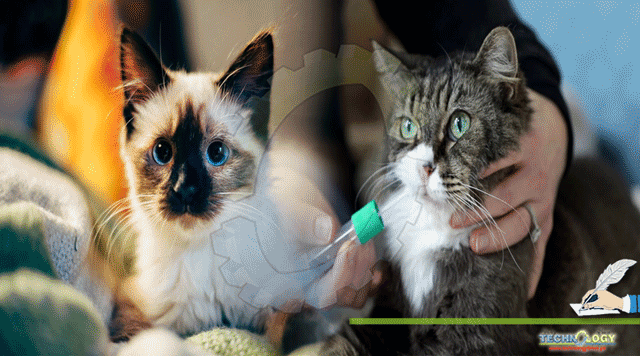Cats are lovable and pretty creatures. Just like humans, DNA is the hereditary material of cats that codes all the genetic information in it.

Authors: Muhammad Jawad Bashir, Dr. Muhammad Ashraf
Genes are like the story and DNA is the language that the story is written (~Sam Kean~). Many cat owners ask the following questions about the “DNA testing in cats: Here, we will discuss “DNA testing in cats along with all related facts and figures under the light of scientific literature. DNA is like a computer program but far advanced that any software ever created. (~Bill Gates~). DNA stands for Deoxyribonucleic acid. It is a long, double stranded (duplex) molecule that is made up of various base pairs and contains all genetic information about the cats. It is located in the nucleus of the cell, wrapped in chromosomes.DNA determines the overall appearance, actions, health and other characteristics of an animal. Just like humans, cat contains approximately 2.5-3 billion base pairs in their DNA.
Genetic markers in the cats:
According to latest scientific studies, modern domestic cats have genetic markers which divide them into four distinct geographical regions with respect to their origin namely, Asia, Europe/America, Africa and the Mediterranean basin.
DNA testing in cats:
- DNA testing for domestic cat appearance traits and diseases is a quickly growing asset for veterinary medicine. With the recent advancements the molecular research, DNA testing is also becoming popular in the world of pets. DNA testing in cats tells us about many beneficial things. Some important applications of DNA testing in cats have been enlisted below:
- DNA testing tells about the “Lineage of the cat”. It reveals the breed history of your cat. This how, it helps owners in making right breeding decisions.
- DNA testing tells about the different genetic diseases (which run in generations). It provides a quick insight on various inherited health risks. By knowing these facts, you can take all precautionary measures to prevent the onset of such disastrous diseases. A responsible owner should consider DNA testing for the better understanding and preparedness of health-related issues in his/her beloved furry friend. For instance, almost 250 hereditary diseases have been reported in cats so far such as polycystic kidney disease that is common in Persian cat.
- DNA testing provides information about the percentage of wild DNA present in your domestic companion cat. However, such types of DNA tests require specific kits and are applicable to ambiguous, larger or spotted kittens.
- DNA tests measures various traits of your cat such as body color, coat type etc. Over and above, it tells about the mutations in the genes. Some traits are highly desirable and this technique helps breeders to more correctly determine the appropriate breeding and potentially becoming the efficient breeders.
- According to a research study that was conducted at Lyons Feline Genetics Labs, UC Davis, It was found that, there is a recessive mutation that causes curly coat in Cornish Rex cats.
- Last but not least, DNA tests also help in determining the country of origin of the cats.
Important DNA tests:
There are a number of methods to test the DNA but the most commonly used are Real-time PCR, Allele- specific oligos (ASO), Restriction fragment length polymorphism (RFLP) and other mass spectrometry based assays. These assays have different limitations and advantages. This is simply done by spotting the genetic markers which are responsible for the causation of a particular disease..
DNA testing for diagnostic purpose:
Approx. thirty-three genes comprise of fifty mutations which alteration in feline appearance and contribute in disease causation. DNA testing is also a diagnostic tool. It helps in detecting a number of health-related conditions in cats.. Usually, DNA testing is recommended to diagnose the neuromuscular diseases in the cats. According to a scientific research published in the journal of feline medicine and surgery, it stated that polycystic kidney disease in Persian cats is an autosomal dominant condition. DNA analysis and ultrasound were compared for their specificity and sensitivity. It was concluded that both tests are essential to reach the actual diagnosis in a perfect way. However, at early age ultrasound is a reliable diagnostic tool.
Genetic Aspects:
Remember, presence of a clinical disease in a cat and the severity of the disease are influenced by some important genetic aspects which have been enlisted below: 1) Age of onset 2) Variable expression 3) Disease heterogeneity 4) Genetic testing accuracy 5) Incomplete penetrance DNA testing is not always 100% accurate. It depends upon various factors such as specificity and sensitivity of the test, Laboratory etc.
Summary:
DNA is a hereditary material. There are a lot of practical applications of DNA testing in cats as well. DNA testing reveals a number of interesting facts about the cats such as breed background/history, country of origin, risks of inherited diseases, closeness with the wild relatives etc. There is still need of much research in this area of DNA science particularly in animals- cats